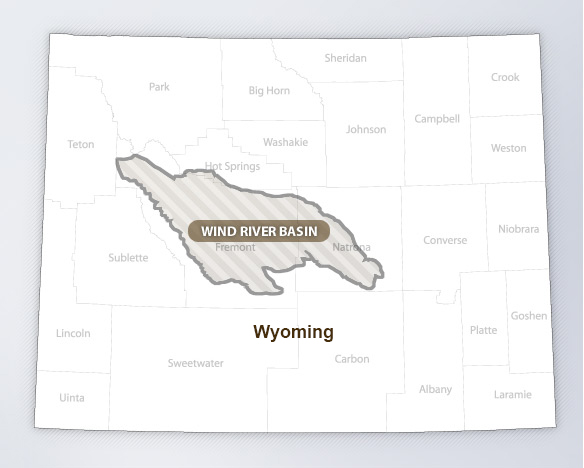
Wind River Basin

The Wind River basin of central Wyoming shows that the area of the present basin was a part of the eastern marine shelf. A conformable sequence of 10,000-12,000 feet of predominantly marine sediment was laid down prior to the period of mountain building. It was manifested by southward and westward compressional forces which developed major overthrust mountain belts. These ranges, the Wind River Mountains west of the basin, the Owl Creek Mountains at the north, the Granite Range at the south, and the Powder River lineament at the east, formed a parallelogram around the Wind River basin.
Almost all the oil produced in the basin is obtained from structural traps. This event developed as the primary significant interruption to the regional continuity of the various marine formations, and therefore it was of primary importance in the localizing and accumulating of oil. Almost all the exploratory test wells in the Wind River basin were drilled on anticlinal structures. This form of exploration has been very successful, and the more obvious anticlines have been drilled.
Future prospecting will undoubtedly consist of geophysical work, to find the more subtle structures, plus subsurface geology to find stratigraphic traps similar to the two most recent discoveries in the Wind River basin.